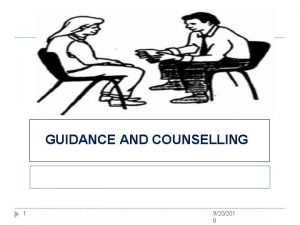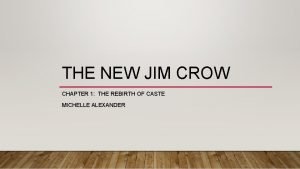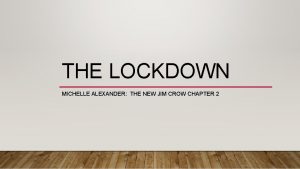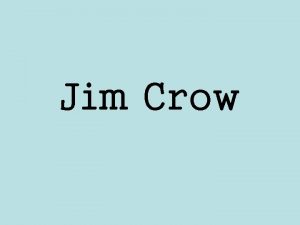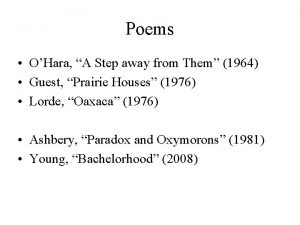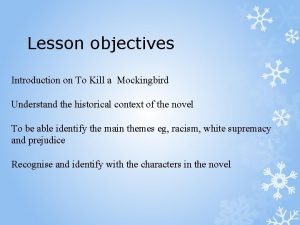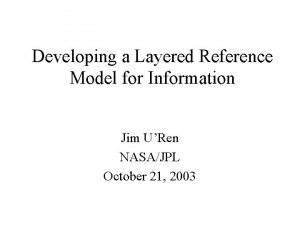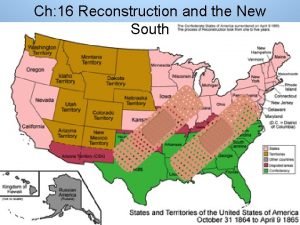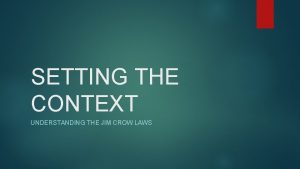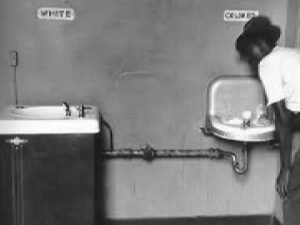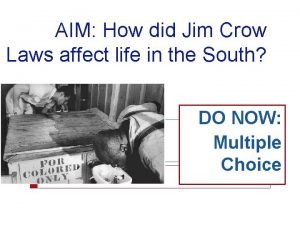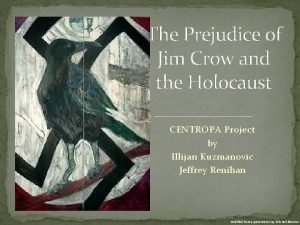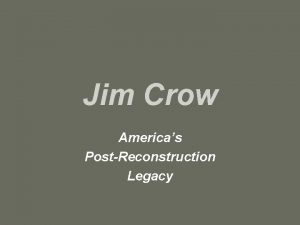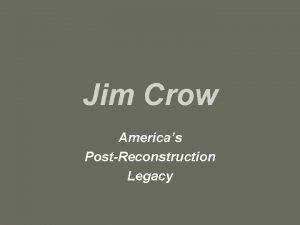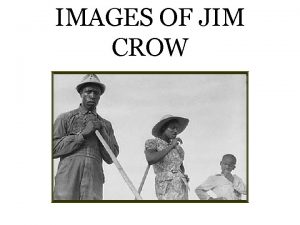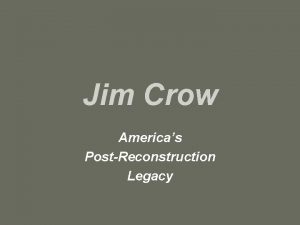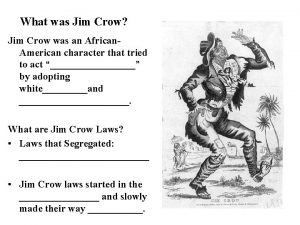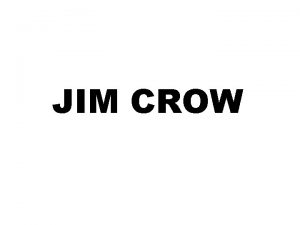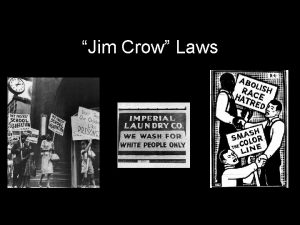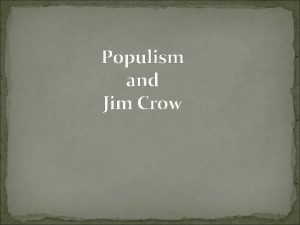The World of Jim Crow chapter 9 section












- Slides: 12

The World of Jim Crow -- chapter 9, section 3 --

The Roots of Jim Crow • Reconstruction – Union troops enforce rights of former slaves in South – Blacks vote blacks into office • 1877 = End of Reconstruction – No more Union troops to enforce rights – Freedoms begin to fade

Voting Restrictions • Concern = too much political power for blacks if they vote • 1890 s: voting restrictions emerge – Property requirement – Poll tax – Literacy tests – Grandfather clauses • Limit black voting w/out specifying

De Facto Segregation • Segregation that simply results from tradition. – It exists in fact, but not in law. • Soon became legalized – Jim Crow laws required segregation in schools, parks, hospitals, theaters, restrooms, other public buildings. – Black facilities were always inferior.

Jim Crow Etiquette • Keeping blacks “in their place” • System of etiquette requiring blacks to show deference to whites – Whites say, “Boy” or “(first name)” – Blacks say, “Mister” or “Sir” • Small breaches of etiquette: – Loss of job for blacks – Subjected to violence

Lynching • The murder of an accused person by a mob w/out a lawful trial. – Sometimes included a mock trial. – Sometimes victims were mutilated before being hanged or shot. • Lynchers were rarely pursued, caught, convicted, or punished.


Northern Migration • Many African Americans moved north de facto discrimination – Schools, housing, employment • Job competition in N. cities creates fear. RACE RIOTS! – NYC, 1900 – Springfield, Illinois, 1908 (not job-related)

It becomes LEGAL. • Plessy v. Ferguson, 1896 – Homer Plessy (1/8 African) buys a firstclass train ticket from New Orleans. He refuses to sit in the black only car. – He is arrested. • Case reaches the Supreme Court.

Plessy Decision • RULING: Segregation is legal as long as the separate facilities were equal to the whites’ facilities. – “Separate but Equal” • The 14 th Amendment was “not intended to give Negroes social equality but only political and civil equality. ”

Resisting Discrimination • 1905: Niagara Movement vows – Never to accept “inferiority” – Never to bow to “oppression” – Never to apologize “before insult” • Only 400 initial members • They are listened to after the 1908 Springfield Race Riots.

NAACP • Mary White Ovington – White social worker – Organized a national conference to address the “Negro Question” – Founding of the NAACP • By 1914 – 50 branches w/ 6, 000 members – Worked through the court system
 Merits of non directive counselling
Merits of non directive counselling The new jim crow chapter 1
The new jim crow chapter 1 The new jim crow chapter 2
The new jim crow chapter 2 Jim crow character
Jim crow character A step away from them
A step away from them Symbols of to kill a mockingbird
Symbols of to kill a mockingbird Rennasa
Rennasa Apartheid vs jim crow venn diagram
Apartheid vs jim crow venn diagram Jim crow laws in what region or regions did it exist
Jim crow laws in what region or regions did it exist Understanding jim crow (setting the setting)
Understanding jim crow (setting the setting) Jim crow cartoon character
Jim crow cartoon character Jim crow laws definition
Jim crow laws definition Jim crow laws
Jim crow laws
